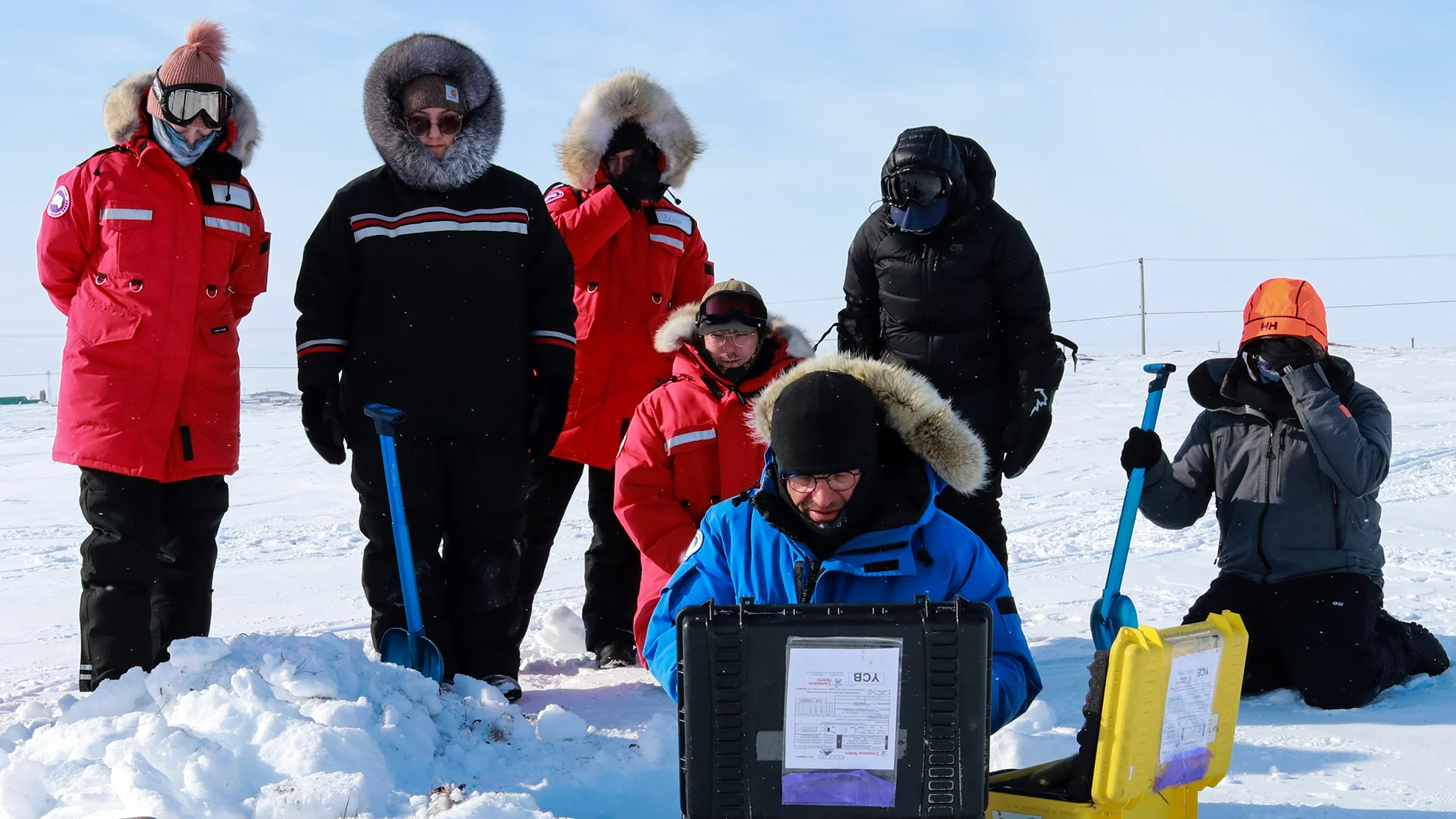
Meet the students studying the fate of Arctic snow
The Arctic Snow School — the first field school to focus specifically on Arctic snow — recently took place at the Canadian High Arctic Research Station (CHARS) in Iqaluktuuttiaq, otherwise known as Cambridge Bay.
Hosted by Sentinel North at Université Laval and the Groupe de Recherche Interdisciplinaire sur les Milieux Polaires (GRIMP) at the University of Sherbrooke, the school brought together 40 researchers, scientists, and Inuit knowledge holders to better understand snow, what it means to Arctic communities, how it is changing, and how we can adapt.
For some of the 20 young international researchers in attendance, it was their first experience collecting data from the region physically — many of them rely predominantly on satellite or remote sensing data for their work.
For most, it was also their first time hearing from Inuit elders and knowledge holders about living with climate change.
The Weather Network contributor Meral Jamal embedded with the team and met with many of the young researchers. Here are some of their stories.
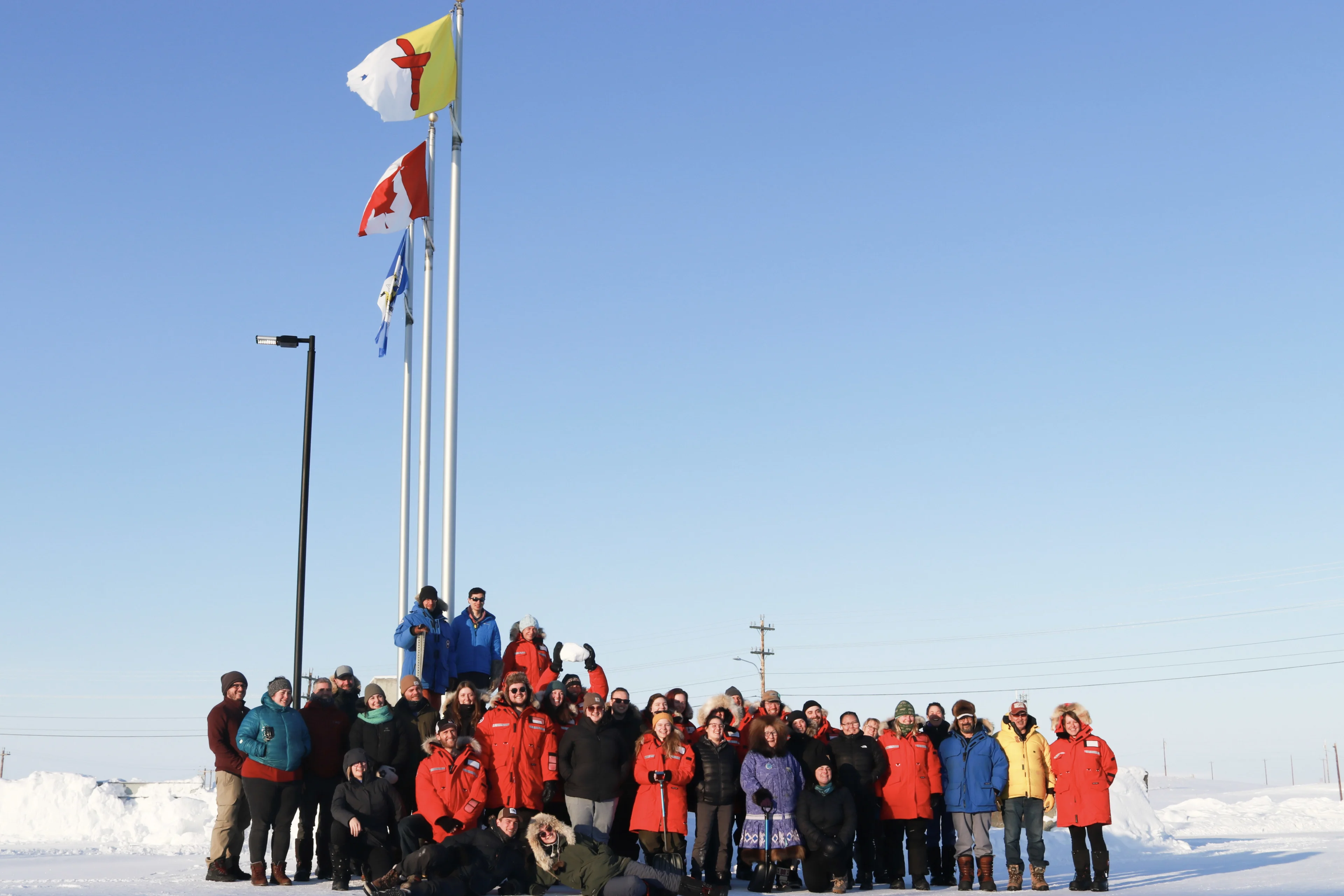
Forty researchers, students and Inuit knowledge holders outside the Canadian High Arctic Research Station in Cambridge Bay in the first week of April. They came together at the station as part of the first Arctic Snow School. (Meral Jamal)
Teamwork in field work
Ian McDonald sat in silence on his final day in Iqaluktuuttiaq, a Nunavut community he was visiting from the territory’s capital Iqaluit for the first time.
It was a warm but windy April afternoon, the temperature about -13 C.
McDonald, an Inuk student in the environmental technology program at the Nunavut Arctic College, was seated in a circular room at the Canadian High Arctic Research Station — a multidisciplinary facility to study the region created by the federal government and opened in 2019.
Six days earlier, he and other students were in this room for the very first time, participating in a sharing circle where they talked about what snow means to them.
McDonald was quiet at the time, seeming to think over his responses but not quite ready to share them just yet.
Looking back almost a week later, he said what drew him to the Arctic Snow School was the opportunity to gain more hands-on experience with field research.
READ MORE: Solutions for navigating shifting trails in the Canadian Arctic
According to him, the environmental technology program at the Nunavut Arctic College equips students with training in more generalized field research. Studying at CHARS over the week, in comparison, involved focusing specifically on snow: how to measure its depth, density, and, in some sense, decline.
Over the course of the school, McDonald and other students learned how to use technology such as a spectrometer — which collects data about the amount and frequency of light reflected off the snow surface — as well as a radiometer that measures microwaves coming out of the snow.
Field work was a learning experience for the group, with McDonald noting that “it was very different going out into the field with people I just met because you don't really know their strengths and weaknesses.”
“We had to communicate a lot more compared to my college program, where I know everybody's personal lives very well because I've spent the last two years with them,” he said.
“Working together with new people was definitely a challenge,” McDonald added, “but over the week of staying together we've learned to know each other very well.”
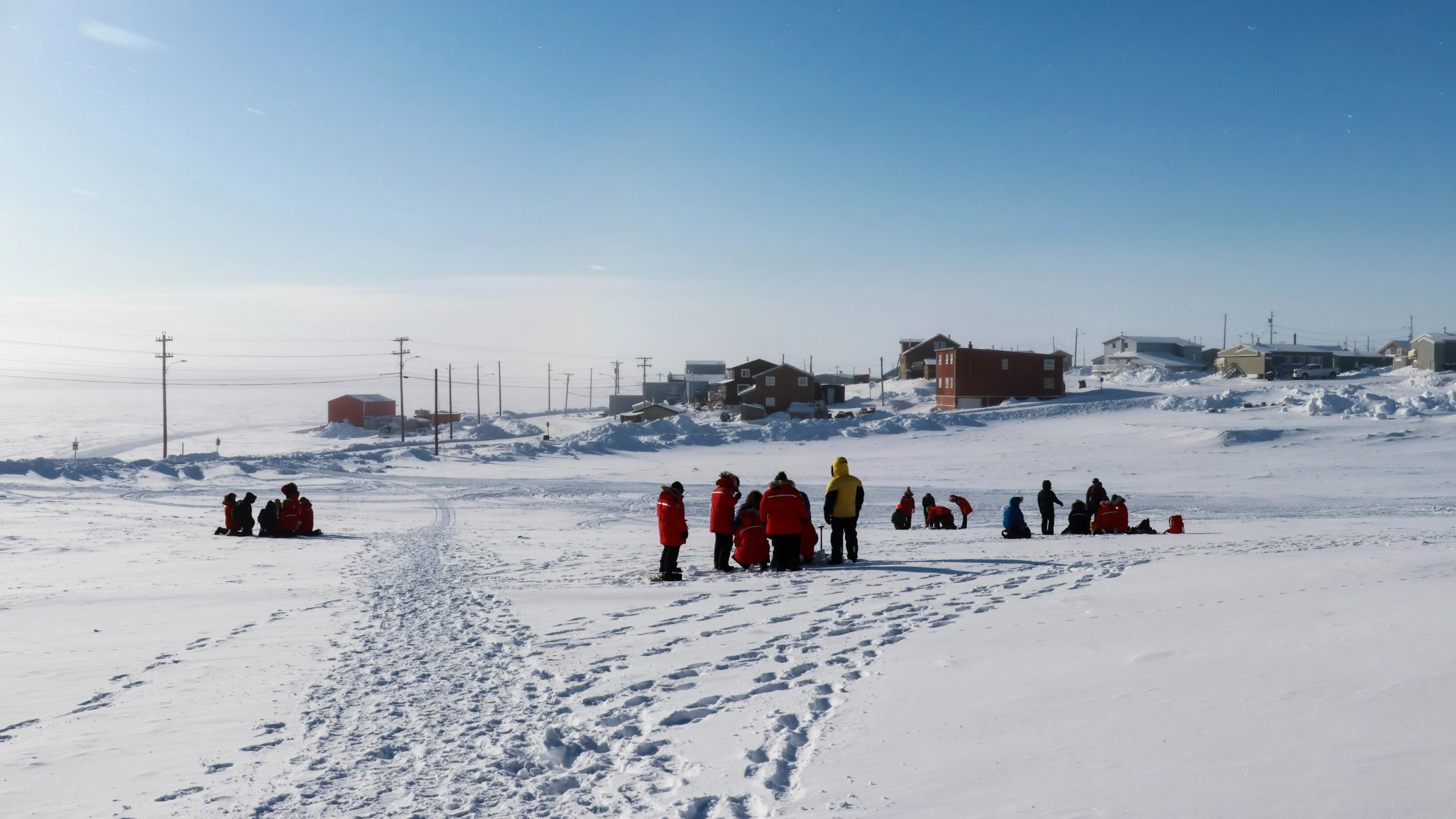
Students on the first day of the Arctic Snow School in Cambridge Bay on April 1. They were divided into groups of 6 and learned how to take basic snow measurements such as snow depth. (Meral Jamal)
Thinking like a lemming
Mathilde Poirier, a PhD student in biology at Université Laval, was selected to attend the Arctic Snow School as a mentor for younger researchers participating.
Poirier’s research is focused on the impact of snow on wildlife interactions. In particular, she has been researching how changing snow conditions are impacting the lives of lemmings.
While the Arctic Snow School was not her first experience in Nunavut, or her first time conducting field research, she said what drew her to participate is the opportunity to hear and learn from Inuit elders and knowledge holders.
The school brought together five Inuit elders and knowledge holders who have experience in wildlife monitoring and are part of the hunters and trappers committees in their communities from across Nunavut and the Northwest Territories.
For Poirier, hearing their perspective on changing snow conditions validated so much of the research she has conducted.
“[The elders and knowledge holders] have been sharing their observations about the impact of climate change in the North that just confirms what we see at our weather station,” she said.
“And we all come up with the same conclusions with what we see here — for example, there is almost no depth here at the bottom of the snowpack because there are a lot of rocks on the ground at this specific place.”
She found lemmings spend much of the wintertime living and reproducing inside snowpacks, but the hardening of snow is making it more difficult for them to do this — a scientific fact that was confirmed by Inuit who were at the school.
“I really like to see when our different perspectives just merge together,” Poirier said of the experience.
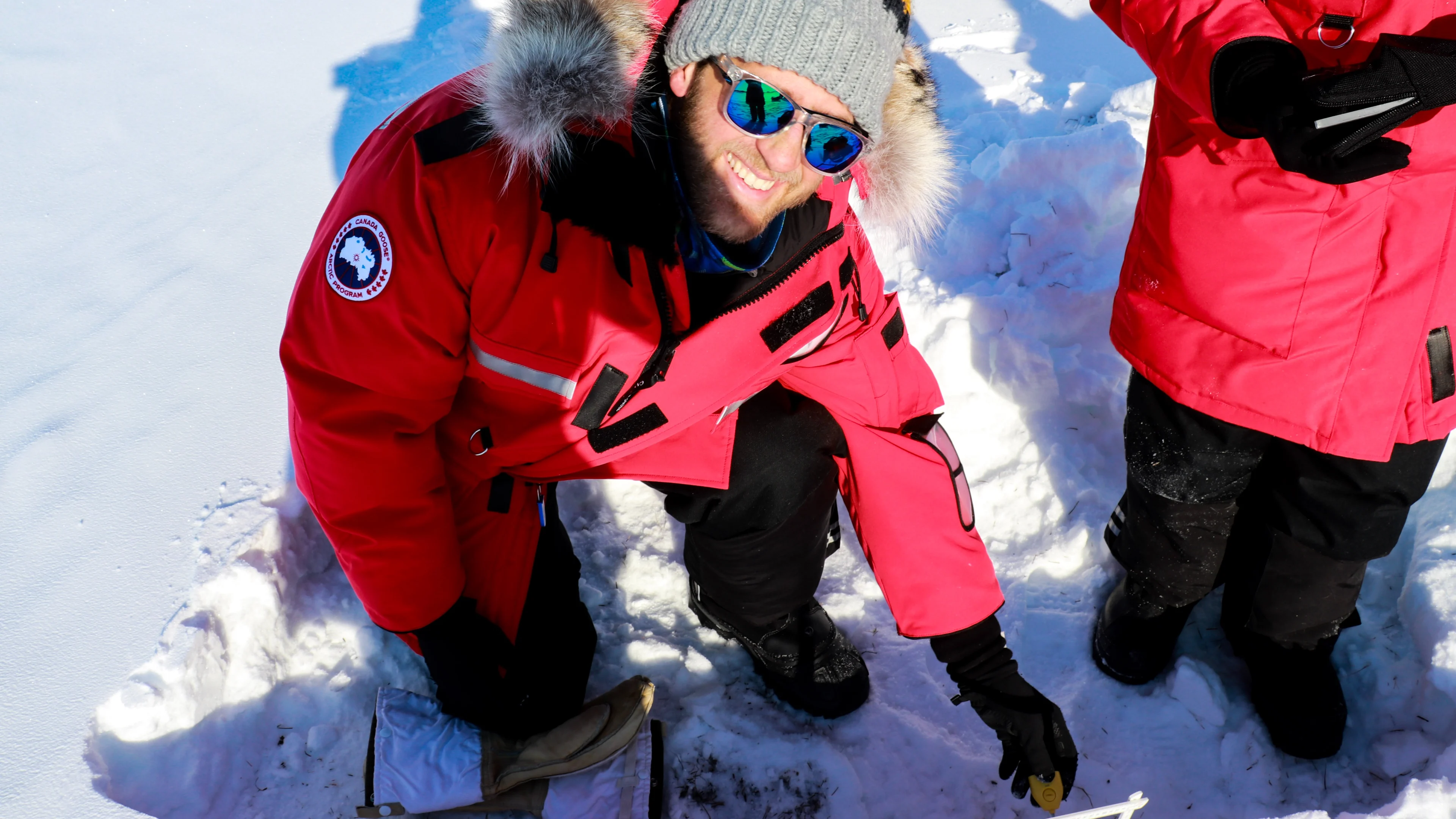
Benjamin Sullender during field work outside the Canadian High Arctic Research Station in Cambridge Bay, Nunavut. A student at the University of Washington, Sullender is researching how changing snow conditions in the Arctic are impacting predator and prey interactions. (Meral Jamal)
From snapshots to the bigger picture
Benjamin Sullender, a PhD student in environmental and forest sciences at the University of Washington, first heard about the snow school from one of his advisers.
Sullender is studying the impact of changing Arctic conditions on predator and prey interactions, like how deer and cougars move through different types of snow in the region. This involves looking at other wildlife too, such as wolves, and the animals they chase down, such as moose and caribou.
While his research focuses on the impact of changing snow conditions on Arctic wildlife, Sullender said what drew him to the snow school is the opportunity to learn more about the interconnectedness of snow sciences and climate change in a larger sense.
“There's all these different things you can do whenever you dig a snow pit, whenever you're looking at optical properties or specific surface area — all these really technical terms that I have heard on the fringes and maybe seen in papers that I'm reading but have never thought to really use,” he said.
“Being able to talk with people as they're taking these measurements — what's motivating them to study these different things — it helps me remember that everything is really just connected to the same thing of trying to understand how snow works.”
According to Sullender, studying snow in myriad ways and learning about the interconnectedness of the Arctic is important because “a huge part of what ecologists do is we try to tell the story of a place.”
“The story that we tell is based on a super narrow window into the life of a lemming or the life of a wolf and as scientists, we can start pulling from datasets that maybe if we're lucky, we might get 10 years of data,” he said.
“But talking with each other, with Inuit elders, and starting to build on the Indigenous knowledge — it is such a rich history of people paying really close attention to what's going on in terms of specific snow conditions, rain on snow events, and also animal populations and movements.”
For Sullender, the opportunity to engage with other young researchers and Inuit at the school has been a way to go from studying snapshots of changing Arctic conditions to understanding the bigger picture of climate change in the region.
“To me, this school is a really essential part of what we do — understanding how these little things that we're focusing on as researchers, these tiny little short-term relationships between the data and the animals — how that fits into the much broader narrative of how wildlife exists up here in the Arctic.”
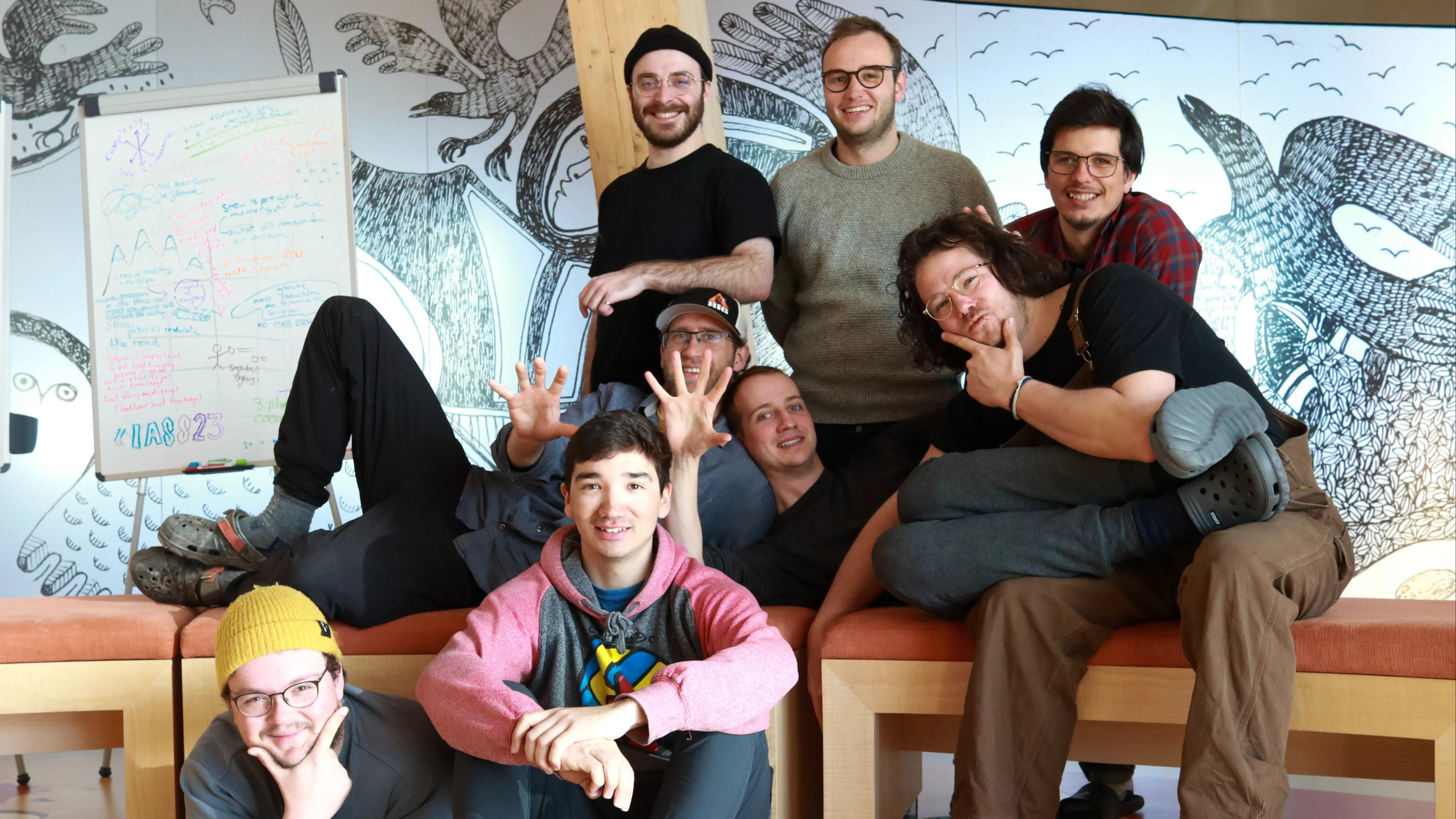
Ian McDonald, seated on the right on the ground, with other students on his last day at the Arctic Snow School in Cambridge Bay. (Meral Jamal)
Lessons for the future
After a week in the Arctic working with their new colleagues, many of the young researchers agreed the things they learned over the course of the week are as personal as they are professional.
For McDonald, the success of the school lies in the opportunity it has provided young scientists like himself to gain “in-depth knowledge of specific topics.”
What he has learned ultimately, and will miss the most about being at the school, is the diversity and richness in perspective that other young people from around the world bring to our knowledge and understanding of snow and climate change.
“The things I would have thought of out in the field were very different compared to what people from Quebec or the Netherlands were thinking and observing,” McDonald said.
For Sullender, the school has built bridges among the scientific community and created an ecosystem for collaboration for young researchers from diverse fields of study.
“I think to me, this school has really reinforced all the different branches of snow science and gathering everyone here together is like a really efficient way to just make sure these conversations happen,” he said of the experience.
“Being able to engage with each other while pointing and prodding the Arctic snowpack is a really cool way to bring it all home for me.”
Poirier agreed, adding that “everyone at the snow school has been curious about everything and we’ve learned so much about each other.”
Meral Jamal was awarded the Persephone Miel Fellowship through the Pulitzer Center for Crisis Reporting to report on the snow school in person.
Thumbnail image: The Arctic Snow School co-lead and professor Florent Domine, centre, teaching students how to use equipment that helps understand Arctic shrubification — a process that involves the expansion of shrubs as the climate warms. (Meral Jamal)











